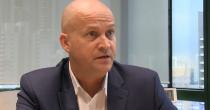- November 08, 2017
- views
BPI reports Q3 2017 financial results
Bank of the Philippine Islands (BPI) posted P5.36 billion in net income for the third quarter of 2017, up 14% from P4.71 billion in the same period last year, as total revenues increased as a result of higher interest income.
Net income for the first nine months of 2017 reached P17.05 billion, up 32.7% excluding one-off gains from the sale of securities in June 2016, but slightly down by 1.9% year-on-year. Comprehensive income was down 7.5% at P17.27 billion.
Total revenues in the first nine months of the year increased by 5.2% to P53.04 billion. Net interest income surged by 13.5% to P35.50 billion, supported by a wider average net interest margin and a higher loan-to-deposit ratio. Non-interest income declined 8.4% to P17.54 billion, mainly due to the absence of significant one-off trading gains similar to those realized in June 2016.
The Bank’s cost-to-income ratio was 52.5%, higher compared to 50.7% for the same period last year. Return on Equity (ROE) was 13.1% and Return on Assets (ROA) was 1.3%, lower by 1.6 and 0.2 percentage points, respectively.
Total loans reached P1.12 trillion, reflecting a 20.5% growth year-on-year. The increase was largely driven by corporate loans which grew by 24.3%. Gross 90-day NPLs (non-performing loans) declined from 1.64% to 1.47%, while reserve cover rose from 112.3% to 125.6%. Total deposits also rose 14% year-onyear, reaching P1.5 trillion. CASA ratio was at 71.3%, while LDR was at 74.6%.
The bank also posted higher fee-based income, surging 20.1% year-on-year, coming from investment banking, asset management and trust, deposit-related fees, and credit cards.
Operating expenses for the first nine months of the year totaled P27.86 billion, higher by 8.9%, driven mainly by increased spending on technology and, to a lesser extent, higher regulatory costs. Provision for loan losses amounted to P3.61 billion. BPI anticipates continued discipline in managing operating expenses for the remainder of the year.
The bank’s securities position was at P296.58 billion, down 1.9% versus the same period last year. The securities portfolio is mostly in held-to-maturity at P268.94 billion, and thus less exposed to interest rate risk.
Total assets grew by P209.81 billion or 13.2% to hit P1.80 trillion, while total capital reached P181.88 billion, up 8.2% year-on-year. CAR (Capital Adequacy Ratio) was at 13.36% and CET1 (Common Equity Tier 1) was at 12.47%, both higher by 0.36 and 0.37 percentage points, respectively, from December 2016 levels.
“Our results show a good balance of growth and profitability. Earnings from lending operations and feebased businesses are good, and the investments we have been making in technology and digitization should allow for even stronger operating and financial results going forward,” said BPI President and CEO Cezar P. Consing.
He also said, along with efforts to ensure the bank’s strong financial performance, BPI is pursuing its financial inclusion initiatives to fulfill Filipinos’ need for financial services. BPI is doing this through BPI Direct BanKo, Inc., or BanKo.
“BanKo, which used to provide microfinance loans for consumption purposes, has been re-booted to focus on financing self-employed micro-entrepreneurs. BanKo's approach towards customers is personalized and high touch. Early results of the re-booted BanKo are very strong, with the number of clients and the volume of outstanding loans growing month after month,” added Consing.
Re-disseminated by The Asian Banker


